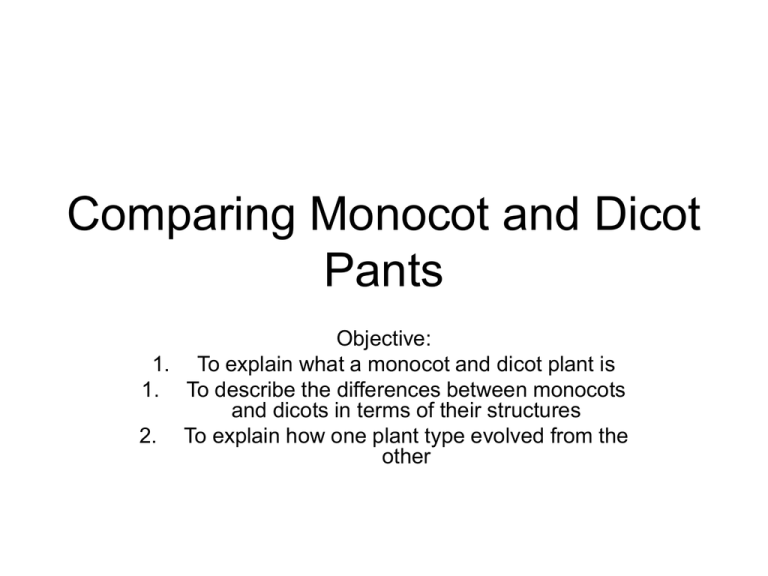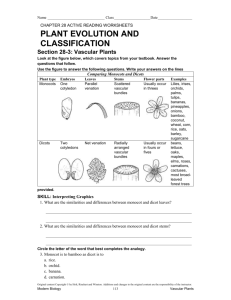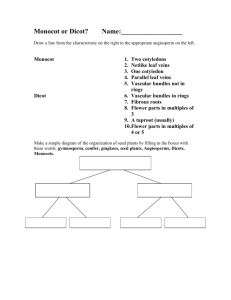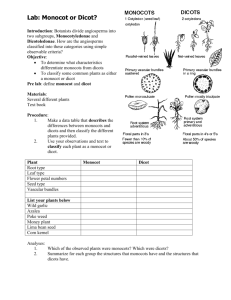Comparing Monocot and Dicot Pants
advertisement

Comparing Monocot and Dicot Pants Objective: 1. To explain what a monocot and dicot plant is 1. To describe the differences between monocots and dicots in terms of their structures 2. To explain how one plant type evolved from the other • Angiosperms can be divided into two classes: • Monocotyledons (monocots) and Dicotyledons (dicots) • Cotyledon: A seed leaf that stores carbohydrates (food) for the seedling (baby plant). • Is often the first photosynthetic organ of a young seedling. Go Discover… • Find out what a monocot plant and a dicot plant is. • Create a table to compare the structures of these two classes of plant. • In your table you should compare seeds, stem, flower, leaf and root. • Page 397 in your text book will help you. • There are other pages that may be helpful as well. You will need to look these up. • The micro-slide-viewer contains a slides with some great images of monocot and dicot structures. Seeds Dicots are seeds that have two parts The two large parts of the seeds are called cotyledons. They supply the food for the young plant when it's growing. Monocots are seeds that only have one cotyledon Leaves Dicot leaves are usually net-veined Notice how the larger veins are thicker and straighter, but as veins get smaller and smaller, they tend to snake around. Monocots typically possess parallel-veined leaves Flower Monocots have their flower parts in threes or multiples of three; example the tulip and lily (Lilium ). Dicots have their flower parts in fours (or multiples) or fives (or multiples). Examples of some common dicot flowers include the geranium and snapdragon. Stem Monocot stems have scattered vascular bundles. Monocot stems have most of their vascular bundles near the outside edge of the stem. Dicot stems have their vascular bundles in a ring arrangement. Dicot stems have bundles in a ring surrounding parenchyma cells in a pith region. Root Dicot roots have their xylem in the center of the root and phloem outside the xylem. The roots of dicots are usually short and stringy. Monocot roots have their vascular bundles arranged in a ring. The root is often a single long tap root with smaller roots growing from it. Plenary 1. What is a cotyledon? 2. How many cotyledons do monocots have? How many do dicots have? 3. What is different about the arrangement of the vascular bundles in monocot and dicot stems? 4. What is different about the arrangement of the veins in monocot and dicot leaves? 5. How is the seed different in a monocot and dicot plant?




